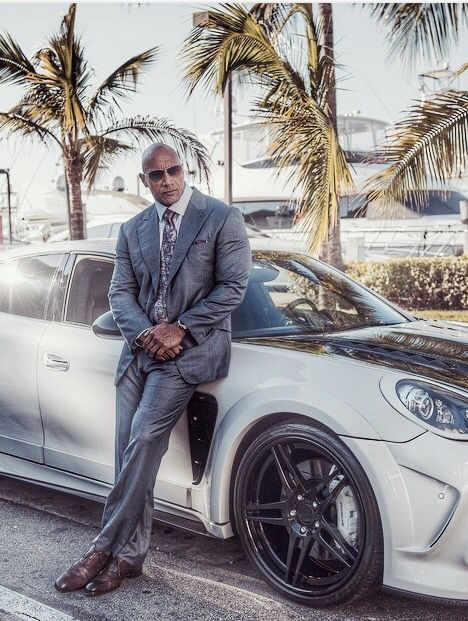When considering a vehicle purchase in the United States, an often-underestimated factor is geography. While drivers in warmer climates might prioritize mileage and overall longevity, those residing in the ‘Rust Belt’—a vast region spanning states like Michigan, Ohio, Pennsylvania, Wisconsin, and Minnesota—face a unique challenge: the relentless assault of road salt, snow, and freezing temperatures. In these areas, a car’s true durability isn’t just about its mechanical prowess; it’s about its ability to resist the inevitable onset of corrosion that can compromise both appearance and safety.
Manufacturers do conduct tests for corrosion resistance, but the reality on the ground shows a clear disparity: some vehicles are engineered to shrug off rust for decades, while others, unfortunately, succumb to a flaky demise long before their engines or transmissions give out. For consumers in these salt-heavy regions, distinguishing between the resilient and the vulnerable isn’t merely a matter of aesthetics; it can translate into thousands of dollars saved in repairs or, more critically, prevent catastrophic structural failures that put occupants at risk.
Drawing on extensive independent analysis, we provide a consumer-centric guide to the automotive landscape of the Rust Belt. This article will shine a light on vehicles that have earned reputations for standing strong against the elements, offering peace of mind to their owners. We will explore five models that consistently prove their mettle in harsh winter conditions, detailing the design and manufacturing choices that contribute to their impressive longevity and resistance to corrosion.

1. **Toyota 4Runner**
The Toyota 4Runner has long been a revered nameplate, not just among those who venture off the beaten path, but also for its remarkable resilience against rust, making it a standout SUV on roads notorious for corrosion. Unlike some of its platform siblings, the 4Runner’s robust body-on-frame construction has consistently demonstrated exceptional durability when confronted with salted winter roads.
This impressive resistance can largely be attributed to the manufacturer’s strategic use of thicker frame coatings and a more comprehensive underbody sealing. These critical enhancements provide a formidable barrier against the corrosive agents found on winter roads, particularly road salt. The results are evident in real-world observations, with owners in states like Michigan and Wisconsin frequently reporting that 15-to-20-year-old 4Runners remain structurally sound, even if some surface rust might eventually become visible.
Toyota’s commitment to quality extends to its material choices, with consistent use of high-quality steel and specialized corrosion-resistant paint finishes. These elements work in concert to significantly prolong the vehicle’s lifespan, particularly in climates where harsh conditions are the norm. This dedication to robust construction underscores why the 4Runner maintains a strong reputation for dependability.
Beyond its rust-fighting capabilities, the 2023 4Runner is recognized as a decent option within the used midsize SUV segment, primarily for its unparalleled off-road capabilities and generous cargo space, which ranks among the class leaders. While passenger seating offers reasonable comfort and the infotainment system is straightforward, the 4Runner’s adventurous character often overshadows other aspects of its design and performance.
This emphasis on ruggedness, however, comes with certain trade-offs for on-road performance, including a somewhat rough powertrain, less-than-stellar fuel efficiency, uninspiring handling, and a noticeably stiff ride. The interior is generally utilitarian, and despite user-friendly controls, the technology might feel outdated compared to more modern rivals. Nevertheless, the 4Runner consistently earns top marks for reliability in its class, though it does present mixed crash-test scores and higher-than-average five-year projected ownership costs. The SR5 Premium trim, positioned just above the base SR5, is often recommended for its synthetic leather upholstery and heated front seats, with some used models also featuring a moonroof, representing a smarter choice given the 4Runner’s strong value retention in the used market.
Car Model Information: 2023 Toyota 4Runner TRD Off Road Premium
Name: Toyota 4Runner
Caption: 2025 Toyota 4Runner TRD Sport (N500)
Manufacturer: Toyota
Aka: Toyota Hilux Surf (Japan, 1983–2009)
Production: October 1983 – present
ModelYears: 1984–present (US)
Class: unbulleted list
Layout: unbulleted list
Chassis: Body-on-frame
Successor: unbulleted list
Categories: 1990s cars, 2000s cars, 2010s cars, 2020s cars, All-wheel-drive vehicles
Summary: The Toyota 4Runner is an SUV manufactured by the Japanese automaker Toyota and marketed globally since 1984, across six generations. In Japan, it was marketed as the Toyota Hilux Surf (Japanese: トヨタ・ハイラックスサーフ, Hepburn: Toyota Hairakkususāfu) and was withdrawn from the market in 2009. The original 4Runner was a compact SUV and little more than a Toyota Hilux pickup truck with a fiberglass shell over the bed, but the model has since undergone significant independent development into a cross between a compact and a mid-size SUV. All 4Runners have been built in Japan at Toyota’s plant in Tahara, Aichi, or at the Hino Motors (a Toyota subsidiary) plant in Hamura.
The name “4Runner” was created by copywriter Robert Nathan with the Saatchi & Saatchi advertising company as a play on the term “forerunner”. The agency held contests to invent new names for Toyota’s forthcoming vehicles. According to Toyota, the “4” described the vehicle’s 4-wheel drive system while “Runner” was a reference to its all-terrain capabilities and how it could “run” off-road.
For some markets, the Hilux Surf was replaced in 2005 by the lower cost but similar Fortuner, which is based on the Hilux platform.
As of 2021, the 4Runner is marketed in the many countries in North and South America. Many markets that did not receive the 4Runner, such as Europe and the Middle East, instead received the similarly designed Land Cruiser Prado, another SUV that shared many of the same components.
The 4Runner came in at number five in a 2019 study by iSeeCars.com ranking the longest-lasting vehicles in the US. The 4Runner had 3.9 percent of vehicles over 200,000 miles (320,000 km), according to the study.
Get more information about: Toyota 4Runner
Buying a high-performing used car >>>
Brand: Toyota Model: 4Runner
Price: $48,463 Mileage: 41,167 mi.
Read more about: Beyond the Buzz: Why 2025 Performance Hybrids Are Redefining the Automotive Landscape for Discerning Drivers
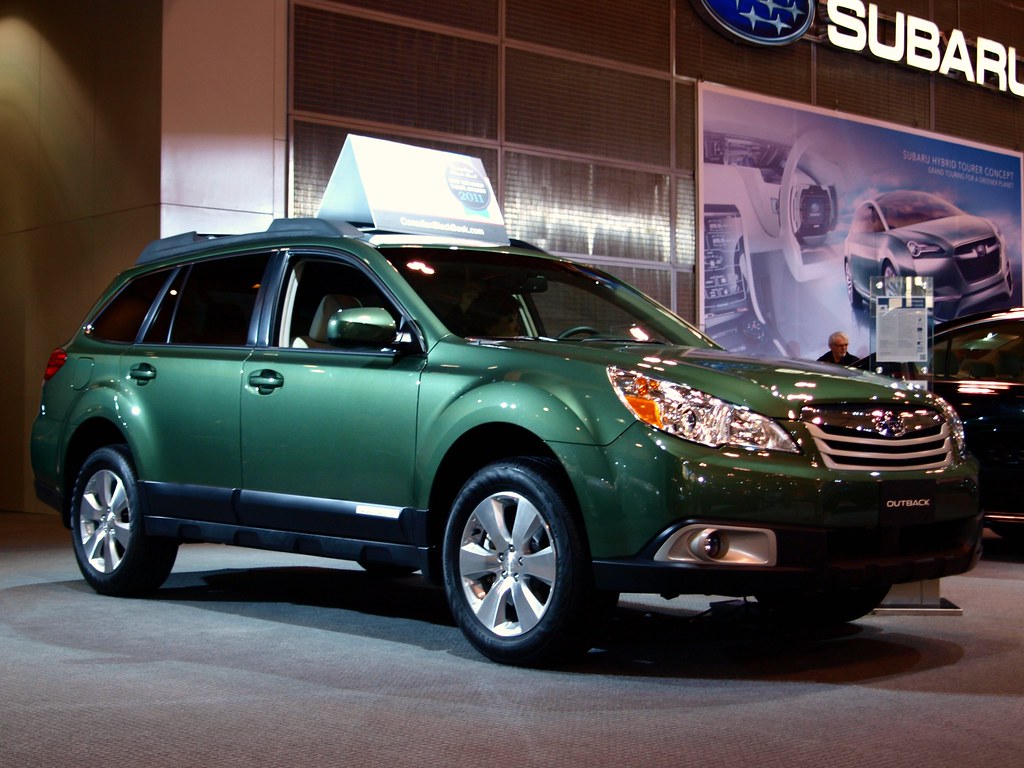
2. **Subaru Outback**.
Subaru’s history with rust has been, at times, a mixed bag, but the Outback model has demonstrated a significant and commendable improvement in corrosion resistance over the past two decades. This positive shift began around the mid-2000s when Subaru initiated the application of more comprehensive rust-proofing techniques and incorporated galvanized panels into its manufacturing process.
As a result of these strategic enhancements, the Outback has solidified its reputation as a highly reliable companion for drivers navigating the challenging winter conditions prevalent in snowy states. Subaru vehicles are inherently designed with superior winter traction in mind, a design philosophy that naturally extended to an increased emphasis on resistance to road salt corrosion. This holistic approach ensures that the vehicle’s underpinnings are prepared for the rigors of winter.
While owners in regions like Minnesota might still find it beneficial to regularly spray the undercarriage for added protection, the contemporary Outback models exhibit a dramatically improved resistance to deterioration. They simply do not rot out with the same alarming speed that characterized older Subaru models, reflecting a successful evolution in the brand’s anti-corrosion efforts. This makes the Outback a far more dependable choice for long-term ownership in the Rust Belt.
Car Model Information: 2013 Subaru Outback 2.5i Limited
Name: Subaru Outback
Caption: 2023 Subaru Outback Premium
Manufacturer: Subaru
Production: 1994–present
ModelYears: 1995–present
Assembly: Ota, Gunma
Aka: Subaru Legacy
Class: Mid-size car
BodyStyle: station wagon
Categories: All Wikipedia articles written in American English, All articles with unsourced statements, Articles containing Japanese-language text, Articles with short description, Articles with unsourced statements from April 2012
Summary: The Subaru Outback is an automotive nameplate used by the Japanese automaker Subaru for two different themed vehicles: a Legacy-derived station wagon, the Outback (1994–present, also sold as Legacy Outback (Japanese: スバル・レガシィアウトバック, Hepburn: Subaru Regashi Autobakku) in some markets), and an Impreza-derived off-road themed hatchback, the Outback Sport (1994–2011).
Most versions of the Outback wagon and Outback Sport have had all-wheel drive as standard equipment.
Get more information about: Subaru Outback
Buying a high-performing used car >>>
Brand: Subaru Model: Outback
Price: $7,795 Mileage: 175,533 mi.
Read more about: Navigating the 2025 SUV Landscape: Kelley Blue Book’s Expert Guide to the Best Two-Row Models for Suburban Families
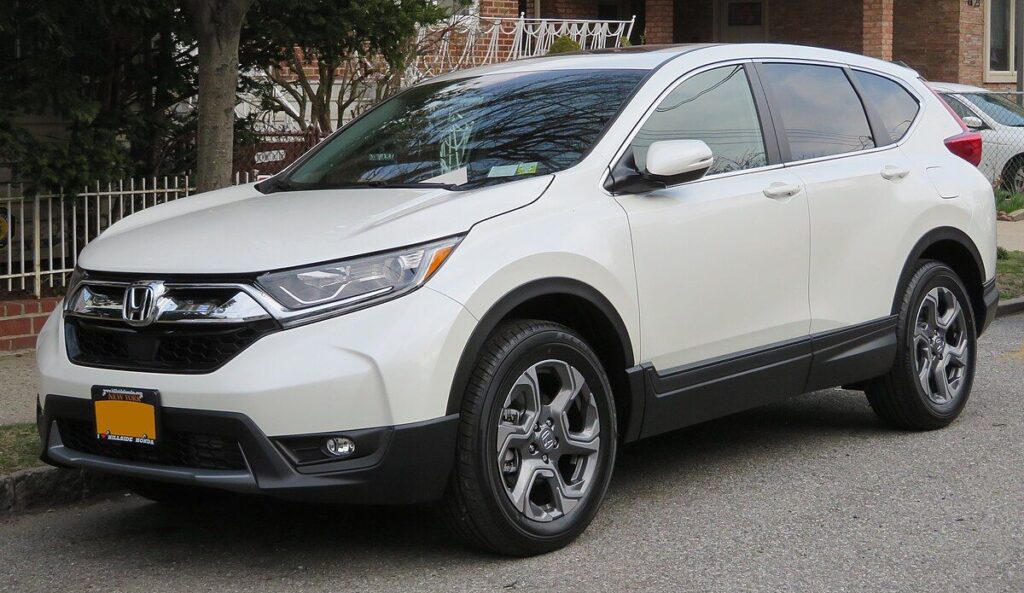
3. **Honda CR-V**
The Honda CR-V has established itself as a formidable contender against the pervasive threat of rust, largely due to Honda’s substantial investments in galvanization and frame sealing technologies. These advanced processes have made the CR-V known for resisting serious rust issues more effectively than many of its direct competitors, providing owners with greater peace of mind.
It is not uncommon to witness early 2000s CR-Vs still operating reliably and looking solid on the roads of northern Ohio and upstate New York, regions where road salt and harsh winters are standard. This remarkable longevity is a testament to Honda’s engineering focus, which included critical improvements such as enhanced wheel-well drainage and the reinforcement of rust-prone areas on the rear subframe. These specific upgrades addressed weak points that had been observed in earlier Civic and Accord models, preventing similar vulnerabilities in the CR-V.
While it is true that no vehicle can be entirely immune to the unforgiving conditions of the Rust Belt, the CR-V’s robust design and relatively straightforward body structure contribute significantly to its ability to outlast many other vehicles in its class. This combination of diligent manufacturing and strategic design makes it a practical choice for consumers seeking durability.
The CR-V consistently delivers strong performance, characterized by ample usable interior space and approachable driving dynamics, available with either front- or all-wheel-drive. Its standard 190-hp turbocharged engine offers capable power, and an optional 204-hp hybrid version is available for those seeking improved fuel economy. The base nonhybrid configuration particularly impresses with a comprehensive roster of modern technology and safety features, all built upon a superb chassis that provides a comfortable and secure ride.
For 2024, the nonhybrid CR-V saw an across-the-board increase in pricing, with the LX trim starting at $30,895 and the EX-L trim reaching $36,055. Among the nonhybrid trims (LX, EX, and EX-L), the EX-L stands out for its robust feature set, including luxurious leather upholstery, a convenient power tailgate, and a larger infotainment touchscreen. The standard 1.5-liter four-cylinder engine, paired with a CVT, delivers adequate acceleration, reaching 60 mph in 8.1 seconds in testing, though the transmission can sometimes cause the engine to drone under heavy acceleration. All CR-Vs are equipped with hill-descent control, and while its handling may not rival the sportiness of a Mazda CX-50 or Volkswagen Tiguan, it provides a smooth ride with sufficient responsiveness to avoid feeling dull.
Car Model Information: 2023 Honda CR-V EX 2WD
Name: Honda CR-V
Caption: 2023 Honda CR-V e:HEV
Manufacturer: Honda
Aka: Honda Breeze (China, 2019–present)
Production: 1995–present
Class: Compact crossover SUV
BodyStyle: Sport utility vehicle
Layout: Front-engine, front-wheel-drive layout,Front-engine, four-wheel-drive layout
Chassis: Unibody
Predecessor: Honda Crossroad
Successor: Honda ZR-V
Categories: 2000s cars, 2010s cars, 2020s cars, All-wheel-drive vehicles, All Wikipedia articles written in British English
Summary: The Honda CR-V (also sold as the Honda Breeze in China since 2019) is a compact crossover SUV manufactured by Japanese automaker Honda since 1995. Initial models of the CR-V were built using the same platform as the Civic.
Honda began producing the CR-V in Japan and United Kingdom, for worldwide markets, adding North American manufacturing sites in the United States and Mexico in 2007, and Canada in 2012. The CR-V is also produced in Wuhan for the Chinese market by Dongfeng Honda, and also marketed as the Breeze in China for the version produced at Guangzhou by Guangqi Honda.
Honda states that “CR-V” stands for “Comfortable Runabout Vehicle,” while the term “Compact Recreational Vehicle” was used in a British car review article that was republished by Honda, associating the model name with the Sports Utility Vehicle abbreviation of SU-V.
As of 2022, the CR-V is positioned between the smaller ZR-V (marketed as HR-V in North America) — with which the CR-V shares a platform — and the larger North American market Passport/Pilot or the Chinese market Avancier/UR-V. It is currently Honda’s best-selling vehicle in the world, and the second best-selling SUV globally in 2020.
Get more information about: Honda CR-V
Buying a high-performing used car >>>
Brand: Honda Model: CR-V
Price: $27,968 Mileage: 18,848 mi.
Read more about: The Ultimate Guide to Used Car Hidden Gems: 12 Models Offering Unbeatable Reliability and Value

4. **Jeep Wrangler (JK and later)**
The Jeep Wrangler has always been synonymous with rugged off-road capability, an enduring icon for adventure seekers. However, its historical performance in the Rust Belt has been generation-dependent. Earlier models were, unfortunately, quite susceptible to frame rot, a significant concern for owners in corrosive environments. Recognizing this vulnerability, Jeep made substantial improvements with the introduction of the JK generation (2007–2018) and further enhanced protection in the subsequent JL generation (2018–present).
These later generations feature significantly better rust protection, incorporating thicker frame coatings and redesigned elements to minimize water-trapping flaws, which were major contributors to corrosion in older models. As a result, modern Wranglers demonstrate surprisingly good durability in snowy regions. Owners in heavily salted areas like Buffalo and Cleveland frequently report that while surface rust might appear, they experience considerably less structural corrosion compared to rival vehicles. This enhanced resistance makes the Wrangler a more viable long-term option for drivers in the Rust Belt.
Moreover, the Wrangler benefits immensely from a vast and active aftermarket community that offers a wide array of undercoating and rust-proofing solutions. These readily available resources allow owners to further extend their vehicle’s lifespan and enhance its resistance to corrosion, providing an additional layer of protection against the elements. This strong community support is a unique advantage for Wrangler owners.
For those looking to embrace the Wrangler’s iconic spirit while keeping costs manageable, starting with the two-door Wrangler Sport S is often recommended. This trim comes standard with a removable cloth top and offers a good balance of essential equipment, including air conditioning, a leather-wrapped steering wheel, power windows and locks, automatic headlamps, and heated mirrors. Choosing the 270-hp 2.0-liter turbocharged four-cylinder engine is a popular choice for its 295 pound-feet of torque, an increase of 35 pound-feet over the standard V-6, which pairs with an eight-speed automatic transmission for low-stress trail driving. The Technology package is also a valuable addition, providing a larger 7.0-inch touchscreen with Android Auto and Apple CarPlay functionality.
Beyond the standard 285-hp 3.6-liter V-6, which can be paired with either a six-speed manual or an eight-speed automatic, the Wrangler offers a diverse powertrain lineup. Options include an optional turbocharged four-cylinder engine with an electric motor for enhanced low-end power, a 3.6-liter V-6 with mild-hybrid assist, a 3.0-liter diesel V-6, a powerful 375-hp plug-in hybrid 4xe powertrain, and a 6.4-liter V-8. Off-road capability remains standard across the range, with a part-time four-wheel-drive system controlled by a lever on the center console. While handling has seen improvements, it retains a truck-like feel compared to contemporary SUVs, and braking distances have shown some inconsistencies in testing.
Car Model Information: 2015 Jeep Wrangler Sahara
Name: Jeep Wrangler
Caption: Jeep Wrangler Unlimited, Sahara edition
Manufacturer: Jeep
Class: Compact SUV
Production: 1986–present
Predecessor: Jeep CJ
Layout: Front-engine, rear-wheel-drive layout,rear-wheel drive
Chassis: Body-on-frame
Related: AIL Storm
Categories: 1980s cars, 1990s cars, 2000s cars, 2010s cars, All-wheel-drive vehicles
Summary: The Jeep Wrangler is a series of compact and mid-size four-wheel drive off-road SUVs manufactured by Jeep since 1986, and currently in its fourth generation. The Wrangler JL, the most recent generation, was unveiled in late 2017 and is produced at Jeep’s Toledo Complex.
The Wrangler is a direct progression from the World War II Jeep, through the CJ (Civilian Jeeps) produced by Willys, Kaiser-Jeep, and American Motors Corporation (AMC) from the mid-1940s through the 1980s. Although neither AMC nor Chrysler (after it purchased AMC in 1987) have claimed that the Wrangler was a direct descendant of the original military model — both the CJ Jeeps and the conceptually consistent Wrangler, with their solid axles and open top, have been called the Jeep model as central to Jeep’s brand identity as the rear-engine 911 is to Porsche.
Similar to the Willys MB and the CJ Jeeps before it, all Wrangler models continue to use a separate body and frame, rigid live axles both front and rear, a tapering nose design with flared fenders, a fold-flat windshield, and can be driven without doors. Also, with few exceptions, they have part-time four-wheel drive systems, with the choice of high and low gearing, and standard open bodies with removable hard or soft tops. However, the Wrangler series was specifically redesigned to be safer and more comfortable on-road, to attract more daily drivers, by upgrading its suspension, drivetrain, and interior, compared to the CJ line. The suspension on all Wranglers included trackbars and anti-roll bars, and, from the 1997 TJ onwards, front and rear coil springs instead of the previous leaf springs.
From 2004 onward, the Wrangler has been complemented with long-wheelbase versions, called Wrangler Unlimited. 2004-2006 models were longer versions with 2 doors. In 2004, only automatic transmission-equipped “Unlimited” versions were sold. In 2005, both an automatic and manual 6-speed (NSG-370) were offered. Since 2007, the long-wheelbase Wranglers were four-door models, offering over 20 in (508 mm) more room. By mid-2017, the four-door models represented three-quarters of all new Wranglers on the market.
Get more information about: Jeep Wrangler
Buying a high-performing used car >>>
Brand: Jeep Model: Wrangler
Price: $10,550 Mileage: 157,089 mi.
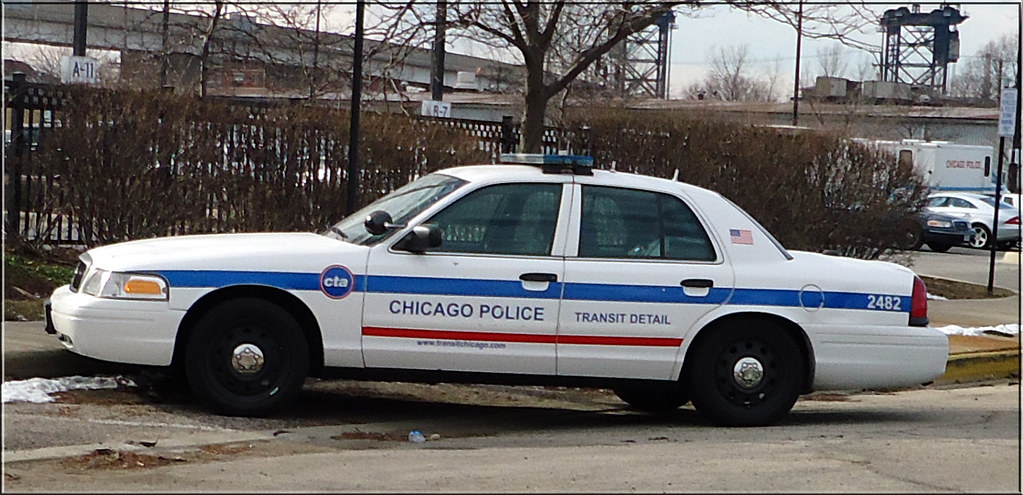
5. **Ford Crown Victoria**
In a surprising twist, the unassuming Ford Crown Victoria, a vehicle once omnipresent in police fleets and taxi services, has earned a reputation as one of the Rust Belt’s most resilient survivors. Its enduring presence in regions prone to heavy road salt exposure is a testament to its robust construction and thoughtful design choices, defying expectations for a vehicle of its era and purpose.
The secret to the Crown Victoria’s exceptional longevity in corrosive environments lies in its underlying Panther platform. This platform was engineered with a focus on durability, utilizing thicker steel components and featuring a surprisingly robust underbody design. These construction elements provided a significant advantage, forming a formidable barrier against the corrosive effects of winter road treatments.
Evidence of its resilience can be found in major Rust Belt cities like Chicago, Milwaukee, and Detroit, where Crown Vics have often been observed to last an impressive 15 to 20 years without developing major rust issues, even under constant exposure to heavily salted roads. This remarkable durability was not lost on the demanding operators who relied on these vehicles for demanding work.
Taxi companies and police departments highly valued the Crown Victoria not only for its renowned durability and relatively low maintenance costs but, crucially, for its inherent ability to resist the type of aggressive rust that prematurely sent many of its competitors to the scrapyard. Its consistent performance in harsh conditions cemented its status as a true workhorse and a surprising champion against the pervasive threat of corrosion.
Not every car is built to withstand the harsh winters, salted roads, and relentless wear-and-tear of the American Rust Belt. While some vehicles shrug off the elements, others seem to fall apart almost as soon as they hit the region. From rapid corrosion to failing components, these are the cars that struggle, and often fail, when faced with the Rust Belt’s unforgiving conditions.
Car Model Information: 2021 Honda Accord EX-L 1.5T
Name: Ford Crown Victoria
Caption: 1998–2002 Ford Crown Victoria LX
Manufacturer: Ford Motor Company
Production: January 1991 – September 15, 2011
ModelYears: 1992–2012
Assembly: Talbotville, Southwold, Ontario
Class: Full-size car
BodyStyle: Sedan (automobile)
Platform: Ford Panther platform
Layout: Front-engine, rear-wheel drive layout,body-on-frame
Predecessor: Ford LTD Crown Victoria
Categories: 2000s cars, 2010s cars, All Wikipedia articles in need of updating, All articles needing additional references, All articles with dead external links
Summary: The Ford Crown Victoria (“Crown Vic”) is a full-size sedan that was marketed and manufactured by Ford. The successor to the Ford LTD Crown Victoria, two generations of the model line were produced from the 1992 until the 2012 model years. The Ford counterpart of the Mercury Grand Marquis, the Crown Victoria was the largest sedan marketed by Ford in North America, slotted above the Ford Taurus. The Crown Victoria Police Interceptor (1992–2011) was marketed specifically for law-enforcement use; a long-wheelbase Crown Victoria sedan (2002–2011) was marketed primarily for taxi cab fleets.
The Crown Victoria was produced on the rear-wheel drive, body-on-frame Ford Panther platform, sharing its chassis with the Grand Marquis and Lincoln Town Car. From 1997 until their 2011 discontinuation, the three model lines were the sole four-door sedans produced in North America with a full-length frame, rear-wheel drive, and a standard V8 engine. While the front and rear crumple zones were engineered into the vehicle, it was one of Ford’s products that were not of unibody construction for the entire generation. The Crown Victoria was the last car made using the Ford Panther platform.
For its entire production, the Crown Victoria was produced by Ford Canada alongside the Grand Marquis at St. Thomas Assembly in Southwold, Ontario. From 1991 until 2011, over 1.5 million cars (including Police Interceptors) were produced by St. Thomas Assembly prior to its closure. A 2012 Crown Victoria (intended for Middle East export) was the final vehicle produced by the facility. Following the discontinuation of the model line, the Crown Victoria was not directly replaced, with the full-size Ford Taurus serving as the next basis for Ford police cars.
Get more information about: Ford Crown Victoria
Buying a high-performing used car >>>
Brand: Ford Model: Crown Victoria
Price: $19,900 Mileage: 81,000 mi.
Read more about: Beyond the Knighthood: An In-Depth Exploration of the Honorific ‘Sir’ Across Cultures and Contexts
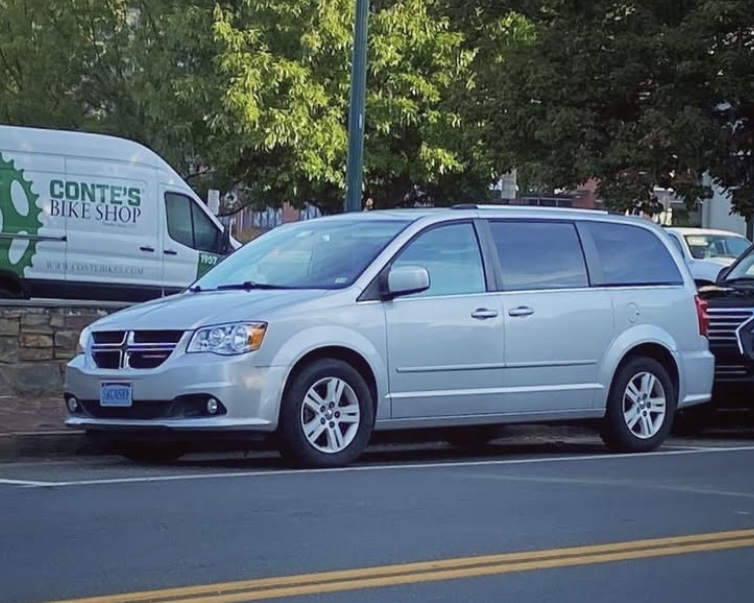
6. **Dodge Caravan / Chrysler Town & Country**
The minivan segment has long been plagued with rust issues, but Chrysler’s offerings, specifically the Dodge Caravan and Chrysler Town & Country, were unfortunately some of the worst offenders. Models from the late 1990s through early 2010s are infamous in the Rust Belt for their alarming rate of structural degradation.
These vans commonly suffered from disintegrating frames, severely rotted rocker panels, and collapsing rear suspension mounts. For families in states like Wisconsin and Minnesota, it was a frustrating reality that their vans, despite often having solid drivetrains, were sent to the junkyard simply because the body structure had given way.
The pervasive nature of these structural failures turned these once-popular family haulers into the poster child of the dreaded “rust bucket.” Their vulnerability to road salt and moisture prematurely ended their useful lives, leaving owners with significant safety concerns and repair costs.
Car Model Information: 2017 Dodge Grand Caravan SE
Caption: 2011 Dodge Grand Caravan Mainstreet
Name: Dodge Grand Caravan
Manufacturer: Chrysler Corporation,Daimler AG,Chrysler LLC,Chrysler Group LLC,FCA US LLC
Class: Minivan
Layout: FF layout,F4 layout
Production: November 2, 1983 –August 21, 2020
ModelYears: 1984–2020
Related: Plymouth Voyager,Chrysler Town & Country (minivan),Dodge Mini Ram,Chrysler Voyager,Volkswagen Routan
Assembly: Windsor, Ontario,Fenton, Missouri,Fenton, Missouri,Fuzhou
Successor: Dodge Journey,Chrysler Voyager
Categories: All-wheel-drive vehicles, All articles with unsourced statements, Articles with short description, Articles with unsourced statements from December 2017, Articles with unsourced statements from May 2009
Summary: The Dodge Caravan is a series of minivans manufactured by Chrysler from the 1984 through 2020 model years. The Dodge version of the Chrysler minivans, was marketed as both a passenger van and a cargo van (the only version of the model line offered in the latter configuration). For 1987, the model line was joined by the long-wheelbase Dodge Grand Caravan. Produced in five generations across 36 model years, the Dodge Caravan is the second longest-lived Dodge nameplate (exceeded only by the Dodge Charger). Initially marketed as the Dodge counterpart of the Plymouth Voyager, the Caravan was later slotted between the Voyager and the Chrysler Town & Country. Following the demise of Plymouth, the model line became the lowest-price Chrysler minivan, ultimately slotted below the Chrysler Pacifica.
Sold primarily in the United States and Canada, the Dodge Caravan was also marketed in Europe and other international markets under the Chrysler brand (as the Chrysler Voyager or Chrysler Caravan). From 2008 onward, Dodge marketed the model line only as the Grand Caravan; Ram Trucks sold a cargo-only version of the model line as the Ram C/V Tradesman. The model line was also rebranded as the Volkswagen Routan from 2009 through 2014.
After the 2020 model year, the Dodge Grand Caravan was discontinued, ending production on August 21, 2020. For 2021 production, the Grand Caravan nameplate was moved to Chrysler, which used it for a Canadian-market version of the Chrysler Pacifica (in the United States, the exact vehicle was marketed as the Chrysler Voyager).
For its entire production run, the Dodge Caravan/Grand Caravan was manufactured by Chrysler Canada (now Stellantis Canada) at its Windsor Assembly facility (Windsor, Ontario). From 1987 until 2007, the model line was also manufactured by Chrysler at its Saint Louis Assembly facility (Fenton, Missouri). Since their introduction in late 1983, over 14.6 million Chrysler minivans have been sold worldwide (including export versions and versions sold through rebranding).
Get more information about: Dodge Caravan
Buying a high-performing used car >>>
Brand: Dodge Model: Caravan
Price: $13,971 Mileage: 74,127 mi.
Read more about: Navigating the Digital Road: Which 2025 Cars Offer the Best Infotainment Usability?
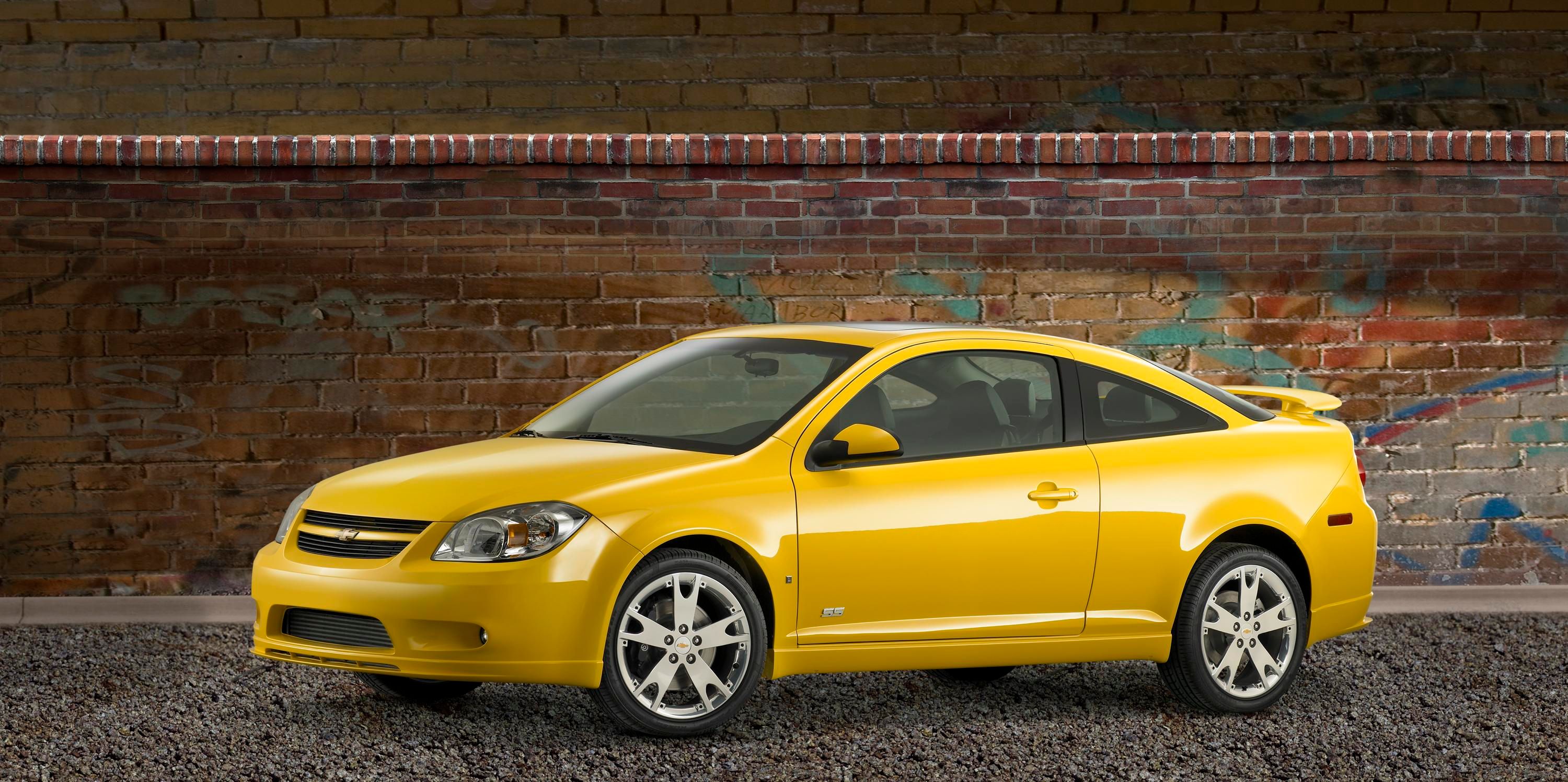
7. **Chevrolet Cobalt**
The Chevrolet Cobalt, while often considered mechanically decent for its class, gained a particularly unfortunate reputation for its poor corrosion resistance, which severely limited its lifespan in salt-heavy regions. Owners in Ohio and Pennsylvania frequently reported severe rotting of subframes and critical brake line corrosion well before the vehicle reached its 10-year mark.
Despite General Motors’ theoretical use of galvanized panels, the practical application fell short, with drainage and underbody sealing proving to be poorly executed. These design flaws meant that road salt and moisture were easily trapped, accelerating the corrosion process on vital structural components.
As a result, many Cobalts, despite having relatively low mileage and functional engines, ended up being scrapped prematurely. The extent to which road salt had eaten away at the underlying structure often rendered them unsafe and beyond economical repair, underscoring a significant flaw in their construction for Rust Belt conditions.
In 2007, Chevrolet introduced a facelift for its existing small-class sedan, the Cobalt, aiming to enhance its appeal as a budget-friendly car. This update arrived as the world economic crisis was gaining momentum, significantly impacting the Detroit-Three automakers and the city itself. Yet, the Cobalt offered an affordable option with its recognizable bow-tie grille, carrying a sense of legacy. The original GM design team had already successfully created a simple successor to the Chevrolet Cavalier and Pontiac Sunfire models in 2004, and the 2007 facelift further enhanced these strengths.
Its rakish design, characterized by a curved greenhouse and short rear overhang, contributed to a more dynamic appearance, while larger headlights were incorporated to improve nighttime illumination. Standard models were equipped with 15-inch steel wheels, though buyers had the option to upgrade to alloy wheels measuring up to 18 inches in diameter. The interior received only minor updates, and while the three-color interior scheme wasn’t universally praised, most customers overlooked this as long as practical features like optional leather seats, automatic transmissions on select trims, and front cupholders for convenience were available. Power-wise, the naturally aspirated 2.4-liter engine now produced 174 hp, while a supercharged variant could reach up to 260 hp, allowing the Cobalt to compete with the new hot hatches and sport coupes emerging from various Japanese automakers.
Car Model Information: 2024 Chevrolet Silverado EV First-Edition RST 4WD
Name: Chevrolet Cobalt
Manufacturer: General Motors
Production: 2004–2010 2012– 2019
ModelYears: 2005–2010 (North America),
Class: Compact car
Layout: Front-engine, front-wheel-drive layout
Predecessor: Geo/Chevrolet Prizm
Successor: Chevrolet Cruze
Categories: 2010s cars, Accuracy disputes from October 2025, All Wikipedia articles written in American English, All accuracy disputes, All articles with unsourced statements
Summary: The Chevrolet Cobalt is a compact car introduced by Chevrolet in 2004 for the 2005 model year. The Cobalt replaced both the Cavalier and the Toyota-based Geo/Chevrolet Prizm as Chevrolet’s compact car. The Cobalt was available as both a coupe and sedan, as well as a sport compact version dubbed the Cobalt SS. Like the Chevrolet HHR and the Saturn ION, it was based on the GM Delta platform.
A Pontiac version was sold in the United States and Mexico under the G5 name for 2007–2009. It was sold as the Pontiac G4 in Mexico for 2005–2006 and as the Pontiac G5 in Canada for its entire run (where it was briefly known as the Pontiac Pursuit and later Pontiac G5 Pursuit). The G5 replaced the Cavalier-related Pontiac Sunfire. While the Cobalt was available as a 2-door coupe and a 4-door sedan in all markets it was offered in, the G5 was only available as a coupé in the United States while a sedan version was sold alongside the coupé in Canada and Mexico.
As with their predecessors, all Cobalts and its Pontiac equivalents were manufactured at GM’s plant in Ramos Arizpe, Mexico and Lordstown, Ohio. The United States Environmental Protection Agency classified the Cobalt as a subcompact car.
Get more information about: Chevrolet Cobalt
Buying a high-performing used car >>>
Brand: Chevrolet Model: Cobalt
Price: $69,999 Mileage: 7,122 mi.
Read more about: Comparing 2025 Small and Compact EVs: A Data-Driven Guide to Real-World Range and Value for Savvy Consumers
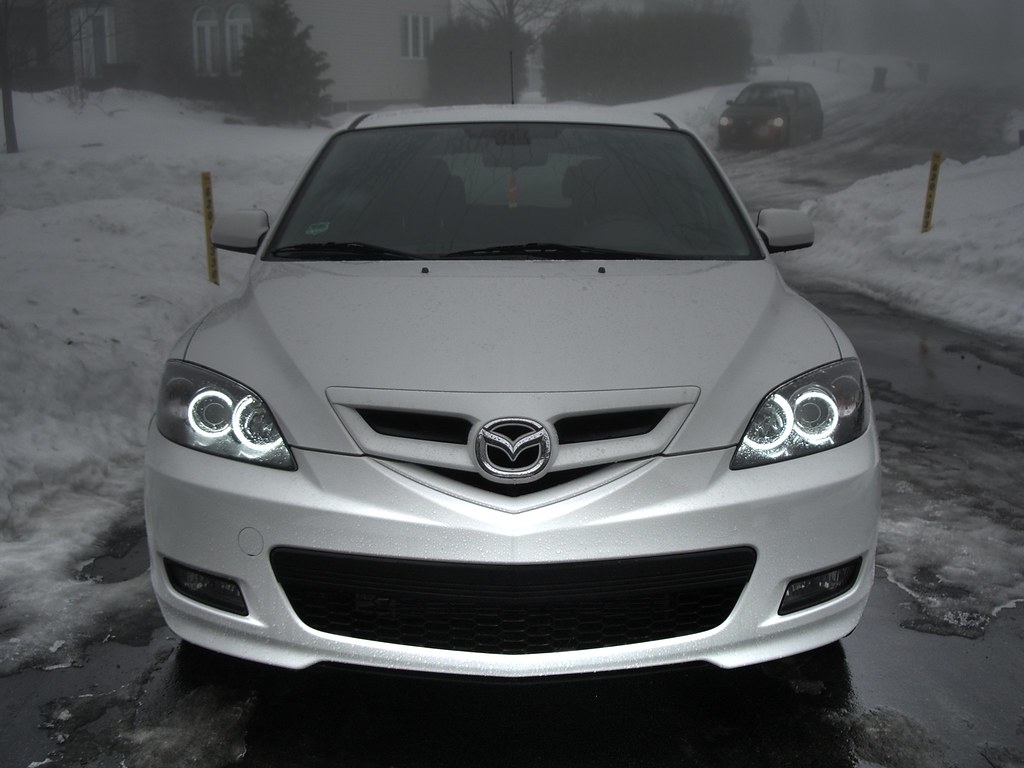
8. **Mazda 3 (Early Generations)**
While Mazda has made dramatic improvements in corrosion protection over the past decade, its earlier Mazda 3 models, particularly those produced between 2004 and 2009, were unfortunately notorious for succumbing to rust in the Rust Belt. These generations of the Mazda 3 exhibited an alarming rate of disintegration in key areas.
Owners frequently reported severe corrosion on the wheel arches, rocker panels, and rear subframes, sometimes within just six to eight harsh winters. In states like New York and Michigan, it became almost an expectation that an early-generation Mazda 3 would fail state inspections due to structural rust long before it reached 150,000 miles.
This widespread issue led to a significant surge in the company’s rust warranty claims during that era, ultimately forcing Mazda to undertake a comprehensive revamp of its anti-corrosion practices in subsequent models. The problem was often attributed to a corrosion inhibitor that was not properly applied to some earlier batches of the Mazda 3, highlighting a critical manufacturing vulnerability.
The Mazda 3, particularly its fourth generation introduced in 2019, represents a family hatchback that distinctly avoids pretending to be an SUV or crossover, staying true to its roots. Automakers today rarely create entirely new platforms for a single purpose, which explains why the Mazda 3 also served as the foundation for the CX-30, essentially a taller, pseudo–off-road variant of the 3. Mazda’s overarching philosophy emphasizes simplicity in design and engineering.
Currently, the Mazda 3 is available with just two petrol engine options: a 2.5-liter naturally aspirated unit delivering 138 bhp, featuring cylinder deactivation technology that runs counter to the prevailing turbo trend, and the ingeniously designed 2.0-liter e-Skyactiv-X high-compression engine. This latter engine offers diesel-like efficiency, achieving 51.4 mpg, and produces 184 bhp, making it the faster choice with a 0-62 mph time of 8.1 seconds. Both engines can be paired with either a six-speed manual or a conventional automatic transmission, notably avoiding twin-clutch systems. Opting for the automatic typically adds around £1,500 to the price and slightly impacts CO2 emissions and fuel economy, positioning it as a convenience choice. Additionally, both engines incorporate a mild hybrid system that powers the vehicle’s electrical components through brake regeneration.
Mazda has meticulously redesigned the fourth-generation 3 from the ground up, with a keen focus on minimizing “visual noise” within the cabin and reducing friction in the engine. Special attention has also been dedicated to refining noise, vibration, and harshness (NVH) levels, enhancing the tactile feel of the switchgear, improving the responsiveness of the infotainment system, and harmononizing the quality of the cabin’s white lighting. These subtle, yet thoughtful improvements, though often not headline-grabbing, reflect a distinctly Japanese approach that has resulted in a comfortable, easygoing hatchback with remarkably few flaws. Furthermore, the Mazda 3 boasts a striking appearance; its proportions, roofline, and rear light roundels evoke a sense of elegance reminiscent of the Alfa Giulietta, standing in stark contrast to the often-over-designed Ford Focus. With over six million units sold worldwide since its introduction in 2003, and more than a million reaching Europe, the Mazda 3 experienced its strongest sales between 2005 and 2008, although sales have seen a decline since that period.
Car Model Information: 2021 Honda Accord EX-L 1.5T
Name: MX-3
Aka: Eunos (automobile)
Caption: 1992 MX-3 1.8
Manufacturer: Mazda
Production: 1991–1998
Assembly: Hofu,Japan
Class: Sports car
BodyStyle: coupé
Predecessor: Mazda Étude
Layout: FF layout
ModelCode: List of Mazda model codes#Model codes
Engine: Liter,Mazda B engine#B5-ZE,Straight-4,DOHC
Transmission: Mazda G5M transmission,manual transmission
Wheelbase: 2455 mm
Abbr: on
Length: 4208 mm
Width: 1695 mm
Height: 52.0 in
Disp: flip
Weight: 1095 kg
Related: Mazda Familia
Designer: Takeshi Arakawa (1988)
Categories: All articles with unsourced statements, Articles with short description, Articles with unsourced statements from August 2017, CS1 French-language sources (fr), CS1 German-language sources (de)
Summary: The Mazda MX-3 is a 2+2-seat, front-wheel drive coupé of a kammback design, manufactured and marketed by Mazda. It was introduced at the Geneva Auto Show in March 1991 and marketed until 1998.
The MX-3 was also marketed as the Mazda MX-3 Precidia in Canada and as the Eunos Presso, Autozam AZ-3 and Mazda AZ-3 in Japan. In Australia it was marketed as the Eunos 30X until late 1996 when it became the Mazda-Eunos 30X.
Get more information about: Mazda MX-3
Buying a high-performing used car >>>
Brand: Mazda Model: Mazda 3
Price: $19,900 Mileage: 81,000 mi.
Read more about: Beyond the Neon Glow: Revisiting 14 Unforgettable ’80s Sports Cars That Defined a Decade of Driving Passion

9. **Ford Escape (2001–2012)**
The first two generations of the Ford Escape, spanning from 2001 to 2012, initially presented themselves as promising compact SUVs, but Rust Belt owners soon discovered their critical Achilles heel: pervasive rear subframe rot. This severe structural flaw proved to be a major determinant in the vehicles’ longevity in corrosive environments.
Countless Escapes were prematurely retired from service after routine inspections revealed dangerous levels of structural rust, particularly concentrated around the rear suspension mounting points. This corrosion compromised the vehicle’s safety and integrity, leading to an unacceptable risk for drivers and passengers.
While some of these Escapes were mechanically capable of reaching impressive mileage, often surpassing 200,000 miles, the crippling body corrosion frequently cut their lives short. For drivers in heavily salted regions like Michigan and Illinois, it was not uncommon to encounter Escapes with remarkably intact interiors but fundamentally unsafe and severely compromised frames.
In 2012, the Ford Escape, built on its long-serving platform, continued largely unchanged, awaiting a full redesign expected the following year. Despite its aging design, it maintained its popularity among compact crossover buyers, consistently ranking among top sellers. This enduring appeal was attributed to its attractive styling, spirited performance, and a suite of high-tech features. Notable innovations included Sync, Ford’s affordable voice-activated interface for audio controls, and Auto Park, a system capable of identifying likely parallel parking spots and steering the vehicle while the driver managed only the gas and brake. The Escape also stood out in its segment for offering a hybrid version, which delivered around 30 mpg in combined driving, appealing to environmentally conscious consumers.
However, prospective buyers should note that the 2012 Escape still lacked some features commonly offered by its competitors, such as a telescoping steering wheel and a sliding/reclining rear seat, which could impact driver comfort and passenger versatility. Folding the backseat was also more cumbersome compared to the simpler flip-down designs found in many other crossovers. Braking performance was another weak point; the Escape utilized rear drum brakes instead of the four-wheel disc brakes favored by most rivals, resulting in less stopping power and greater susceptibility to fade.
All non-hybrid trims of the 2012 Escape could be configured with either front- or all-wheel drive. A 171-horsepower 2.5-liter four-cylinder engine was standard, while a more powerful 240-hp 3.0-liter V6 was an optional upgrade on all trims except the XLS. The four-cylinder engine was paired with either a five-speed manual (exclusive to the XLS) or a six-speed automatic, whereas the V6 came exclusively with the automatic transmission. When properly equipped, the V6 model could tow an impressive 3,500 pounds. Fuel economy figures for the four-cylinder with front-wheel drive and the six-speed automatic were 21 mpg city/28 mpg highway, dropping slightly to 20/26 mpg for all-wheel drive, with combined ratings of 23 mpg for FWD and 22 mpg for AWD. The six-cylinder Escape returned 19/25/21 mpg for front-wheel drive and 18/23/20 mpg with all-wheel drive.
Car Model Information: 2016 Ford Escape SE
Name: Ford Escape
Caption: 2021 Escape Hybrid (US)
Manufacturer: Ford Motor Company
Aka: Unbulleted list
Production: 2000–present
ModelYears: 2001–present
Class: Compact crossover SUV
BodyStyle: SUV
Layout: Unbulleted list
Predecessor: Nissan Terrano II
Successor: Ford Territory (China)
Categories: 2010s cars, 2020s cars, All-wheel-drive vehicles, All Wikipedia articles written in American English, All articles with dead external links
Summary: The Ford Escape is a compact crossover SUV manufactured and marketed by the Ford Motor Company since the 2001 model year. The first Ford SUV derived from a car platform, the Escape fell below the Ford Explorer in size; the Escape was sized between the Ford EcoSport and Ford Edge. The 2005 model year Ford Escape Hybrid was the first hybrid-electric vehicle from Ford, and the first hybrid produced as an SUV.
The first two generations of the Escape used the Ford CD2 platform (jointly developed with Mazda), leading to the release of the rebadged variants, the Mazda Tribute and Mercury Mariner; as with the Escape, both the Tribute and Mariner were marketed in North America (the Mariner was never marketed in Canada). In Europe, the Escape was initially branded as the Ford Maverick from 2001 to 2008 (replacing a Nissan-produced SUV).
Under the mid-2000s “One Ford” globalization strategy, the third and fourth-generation designs of the Escape have been unified with the Ford Kuga, designed by Ford of Europe. Sharing a common body and chassis underpinnings (and several engines), the Escape and Kuga are manufactured in their home markets. As with previous generations, the fourth-generation Escape is offered with gasoline, hybrid, and plug-in hybrid options. Outside of North America, the Ford Escape is marketed in Australia, China, and Taiwan.
In August 2025, it was announced that Ford will be discontinuing the Escape after the 2026 model year.
Get more information about: Ford Escape
Buying a high-performing used car >>>
Brand: Ford Model: Escape
Price: $11,480 Mileage: 82,381 mi.

10. **Nissan Altima (Early 2000s–2010s)**
The Nissan Altima, despite being one of America’s most common sedans, ironically earned a reputation as one of the Rust Belt’s most notorious rust victims, particularly for models from the early 2000s through the 2010s. The areas most vulnerable to corrosion were typically the floor pans, rocker panels, and crucial rear suspension mounts.
In snow-prone states like Minnesota, it was a common sight to see Altimas from the early 2000s displaying massive rust holes by the time they were only 8 to 10 years old. This rapid degradation was a direct consequence of Nissan’s cost-cutting measures during that era, which led to the use of thin metal, inadequate sealing, and very little effective protection against the relentless exposure to road salt.
While Nissan has implemented improvements in newer Altima models to address these issues, the lingering reputation for poor rust resistance continues to affect perception in Rust Belt communities. The early 2000s to 2010s Altimas remain a cautionary tale for buyers in regions where corrosion is a primary concern for vehicle longevity and safety.
Rust in America’s northern states isn’t just a cosmetic annoyance; it’s a critical safety issue. Corroded frames, brake lines, and suspension mounts can fail suddenly and catastrophically, putting drivers and passengers at serious risk. While modern manufacturing techniques such as galvanization, improved paint formulations, and even electronic rust inhibitors have significantly enhanced vehicle longevity, the reality remains that some vehicles are simply engineered with better inherent protection than others.
Car Model Information: 2024 Nissan Altima 2.5 SV
Name: Nissan Altima
Caption: 2024 Nissan Altima SR (L34; US)
Manufacturer: Nissan
Aka: Nissan Bluebird
Production: 1992–present
Class: Compact car
Predecessor: Nissan Bluebird,Nissan Stanza
ModelYears: 1993–present
Categories: 2000s cars, 2010s cars, 2020s cars, All-wheel-drive vehicles, All Wikipedia articles written in American English
Summary: The Nissan Altima is a mid-size car manufactured by Nissan since 1992. It is a continuation of the Nissan Bluebird line, which began in 1955.
The Altima has historically been larger, more powerful, and more luxurious than the Nissan Sentra but less so than the Nissan Maxima. The first through fourth-generation cars were manufactured exclusively in the United States and officially sold in North and South America, along with the Middle East and Australia. For other markets, Nissan sold a related mid-size sedan called the Nissan Teana which was between the Altima and Maxima in terms of size. In 2013, the Teana became a rebadged version of the fifth-generation Altima.
The name “Altima” was originally applied to a top trim line of the Nissan Leopard for the Japanese market in 1986, and then to the Nissan Laurel Altima mid-size car sold in Central America and the Caribbean before 1992. In 1992, Nissan discontinued the Stanza which was a Nissan Bluebird clone, replacing it with the US-built Altima, while remaining a compact car. The first Altima was produced in June 1992, as a 1993 model. All Altima models for the North American market were built in Smyrna, Tennessee, until June 2004, when Nissan’s Canton, Mississippi plant also began producing the model to meet high demand.
Get more information about: Nissan Altima
Buying a high-performing used car >>>
Brand: Nissan Model: Altima
Price: $19,890 Mileage: 56,505 mi.
For drivers navigating the challenges of the Rust Belt, survival often boils down to a dual strategy: making a smart vehicle choice from the outset and committing to proactive maintenance throughout the car’s life. Regular undercarriage washes, especially during and after winter, professional rust-proofing treatments, and prompt repairs to any paint chips can make a world of difference in extending a vehicle’s lifespan. Still, as the stark contrasts between the vehicles discussed in both sections of this article demonstrate, some models were robustly built to fight off the salt for decades, while others, regrettably, seemed to start rusting almost as soon as they left the dealership lot. Ultimately, the difference between a 20-year-old Toyota 4Runner still commanding a decent resale value and a 10-year-old Dodge Caravan destined for the junkyard often comes down to one crucial factor: its resistance to the Rust Belt’s relentless, corrosive grip. This understanding empowers consumers to make more informed decisions, prioritizing safety and long-term value in challenging environments.



